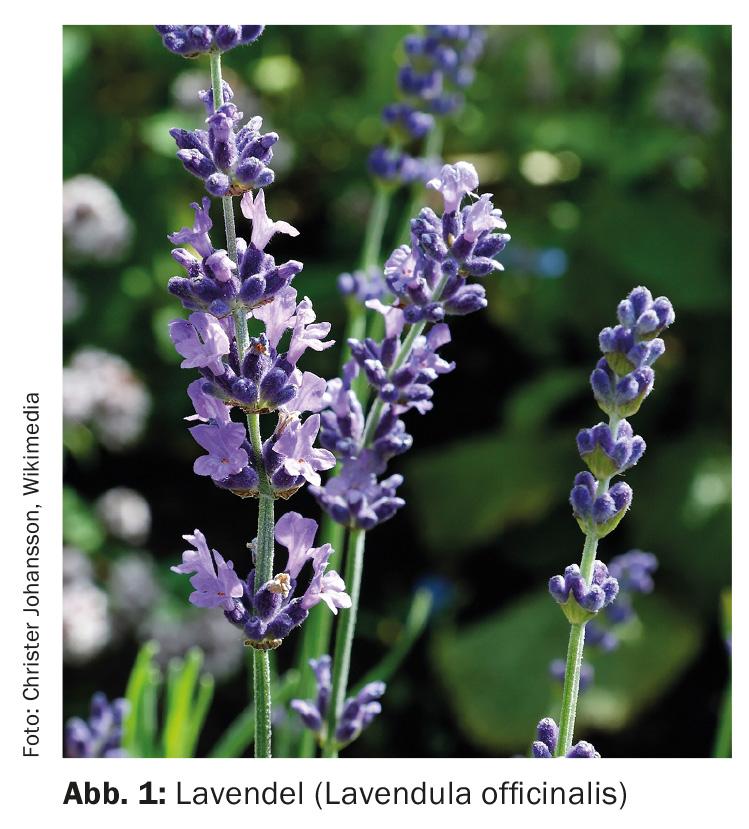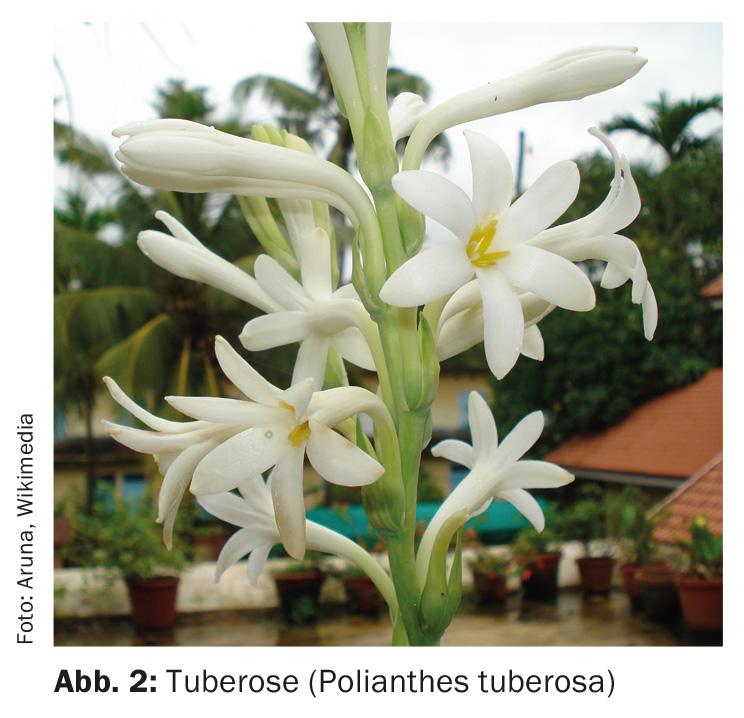Inhalations with essential oils or essences represent an old form of therapy, which in Western countries are used mainly for the treatment of flu-like infections. Interestingly, there are almost no clinical studies investigating their effectiveness. For this, there are a number of studies documenting its effectiveness for other ailments, including, most notably, anxiety.
When thinking about the mode of application of systemically acting drugs, oral and parenteral dosage forms are certainly in the foreground, while rectal treatments are less preferred, at least in Switzerland. Suppositories are therefore used rather little. But there is another systemic form of application, which is often forgotten: Inhalation, i.e. a delivery of drugs through the respiratory tract. In the case of inhalers and discuses, which are mostly used to treat asthma or COPD, it is an integral part of traditional medicine. However, if essential oils and steam are used for inhalation, such treatment is rather unusual. And these are (unfortunately) little used in medical practices.
Inhalations, aromatherapy
Inhalations and aromatherapy are closely related. In inhalations, as mentioned, essential oils are mainly used for the treatment of viral and respiratory diseases, as some essential oils have certain antibiotic, anti-inflammatory and expectorant properties. Inhalation is therefore useful because the drugs used reach the site of action immediately through inhalation. Inhalations can also be helpful in the case of inflammation of the maxillary and frontal sinuses.
We speak of aromatherapy in case of application of essential oils in massage oils, cold baths, scented lamps (scented candles; small bowls in which the essential oil is evaporated by a candle). Aromatherapy is primarily directed at the olfactory organ, which absorbs the essential oils or their active ingredients present in them and can thus influence various bodily functions.
Application
Inhalation for the treatment of a viral or bacterial respiratory tract infection, i.e., cold and/or cough, can be performed with an electric inhaler or a mechanical inhaler. Both have a face mask, which is used to allow deep breathing of the essential essences (oils) and steam used. Electric apparatuses nebulize the water into micro-droplets, which can thus penetrate the alveoli with the essences.
In the case of a mechanical inhaler, the water is heated to about 60 degrees C and the essential oil is added. As an alternative method of application, instead of using a face mask, a cloth can be placed over the head. Inhalation should be performed about four times a day for about ten minutes.
The corresponding essential essences can be used individually or as mixtures. There are also commercial preparations in Switzerland, but these are not reimbursed or are only reimbursed by supplementary insurance.
Precautions
There are people who are allergic to individual essential essences and in such a case they must not use them. Further, in case of bronchial asthma its use is contraindicated. Caution is also advised for infants and young children. In addition, undiluted essential oils must not be used orally and directly on mucous membranes, open wounds and diseased skin areas.
Study situation
Surprisingly, there are almost no clinical studies investigating the efficacy of essential oil inhalations for the treatment of flu-like infections. Equally surprising, however, is the fact that there are a considerable number of clinical studies that have investigated the use of essential oils in the form of inhalations for other ailments. This includes especially treatments in the field of psyche and sleep [1–5].
Lavender oil
The oil extracted from lavender (Lavandula offcinalis, Fig. 1) obtained essential oil also seems to have a positive effect on anxiety when inhaled [1]. (In Switzerland, a corresponding preparation for oral use has recently been approved). A single-blind randomized controlled trial published in 2016 by a team of Iranian researchers reported the beneficial effects of lavender oil on candidates for impending open-heart surgery. In this study, 90 subjects inhaled either lavender or distilled water for 20 minutes. In the verum group, the mean reduction on the Anxiety Score was significantly greater than in the placebo group (p<0.001). Similarly, blood cortisol levels were significantly lower in the verum group than in the placebo group.

Polianthes tuberosa
Tuberose (Polianthes tuberosa, Fig. 2), a member of the agave family with a strong aromatic odor, also appears to have some anxiolytic effect. This was reported by a study also conducted in Iran and published in 2016 [2]. Polianthes tuberosa belongs to Iranian traditional medicine. For this study, 54 students were randomized into two groups, one of which inhaled tuberose essential oil for 15-20 minutes during an exam, while the other group inhaled a placebo. Before the exam, no difference was found between the two groups in terms of nervousness. After the intervention, the determined anxiety difference between the two groups was significant (p<0.05). Within the two groups, a significant difference was found in the verum group before and after essential oil inhalation (p<0.05), but not in the placebo group (p=0.073).
Geranium
Stork’s bill oil can apparently positively influence anxiety and physiological parameters in childbearing women during labor. This was reported in a study published in 2015 [3]. 100 primiparous women were randomized into two groups in which the verum group inhaled geranium oil during labor and the control group inhaled placebo. In the verum group, anxiety assessed by the Spiegelberg questionnaire decreased significantly. Laboratory parameters also improved significantly in the verum group. These positive effects could not be determined in the control group.
Varia
Other studies reported positive effects of bergamot oil (Citrus bergamia) on individuals with mental health problems who were waiting for their treatment in a psychiatric center [4], as well as on the sleep quality of individuals who did shift work at night [5].
However, lavender oil apparently has not only an anxiolytic but also an analgesic effect. This was reported in a study that investigated the effect of this essential oil on the intensity of pain after cesarean section [6]. The antiemetic effect of ginger (Zingiber officinalis) or tea tree oil (Melaleuca alternifolia) against bacterial infections and mycoses are known. However, there are now studies that confirm these efficacies when used as an inhalation for ginger clinically as well as for tea tree oil pharmacologically [7,8].
Summary
Inhalation with essential oils represents an ancient form of therapy, which today in Western countries is used mainly to combat flu-like infections. However, clinical studies are looking at the efficacy of essential oils for other indications such as anxiety, sedation, pain, and vomiting and are yielding positive results.
The studies presented and mentioned here are mostly from countries where, for various reasons, folk medicine still has a higher status than in Western countries. First and foremost is Iran, whose medicine is considered to be of a very high standard.
Literature:
- Hosseini S, et al: Effect of lavender essence inhlation on the level of anxiety and blood cortisol in candidates for open-heart surgery, Iran J Nurs Midwifery Res 2016 (4); 21: 397-401.
- Ghorat F, et al: The Effect of Inhalation of Essential OIls of Polianthes Tuberosa on Test Anxiety in Students: A Clinical Trial, Iran J Med Sci 2016 (3); 41: 13.
- Fakari F, et al: Effect of Inhalation of Aroma of Geranium Essence on Anxiety and Physiological Parameters during first Stage of Labor in Nulliparous Women: a Randomized Clinical Trial, Journal of Caring Scienes 2015 (2); 4: 135-141.
- Han X, et al: Bergamot (Citrus bergamia) Essential Oil Inhalation Improves Positive Feelings in the Waiting Room of a Mental Health Treatment Center: A Pilot Study, Phytother Res 2017 (5); 31: 812-816.
- Kim W, Hur MH: Inhalation Effects of Aroma Essential Oil on Quality of Sleep for Shift Nurses after Nigth Work, J Korean Acad Nurs 2016 (6); 46: 769-779.
- Olapour A, et al: The Effect of Inhalation of Aromatherapy Blend containing Lavender Essential Oil on Cesarean Postoperative Pain, Anesthesiology and Pain Medicine 2013 (1); 3: 203-207.
- Lee YR, Shin: Effectiveness of Ginger Essential Oil on Postoperative Nausea and Vomiting in Abdominal Surgery Patients, J Altern Complement Med 2017 (3); 23: 196-200.
- Li M, et al: Tea tree oil nanoemulsions for inhalation therapies of bacterial and fungal pneumonia, Colloids Surf B Biointerfaces 2016; 141: 408-416.
HAUSARZT PRAXIS 2017; 12(12): 6-8












